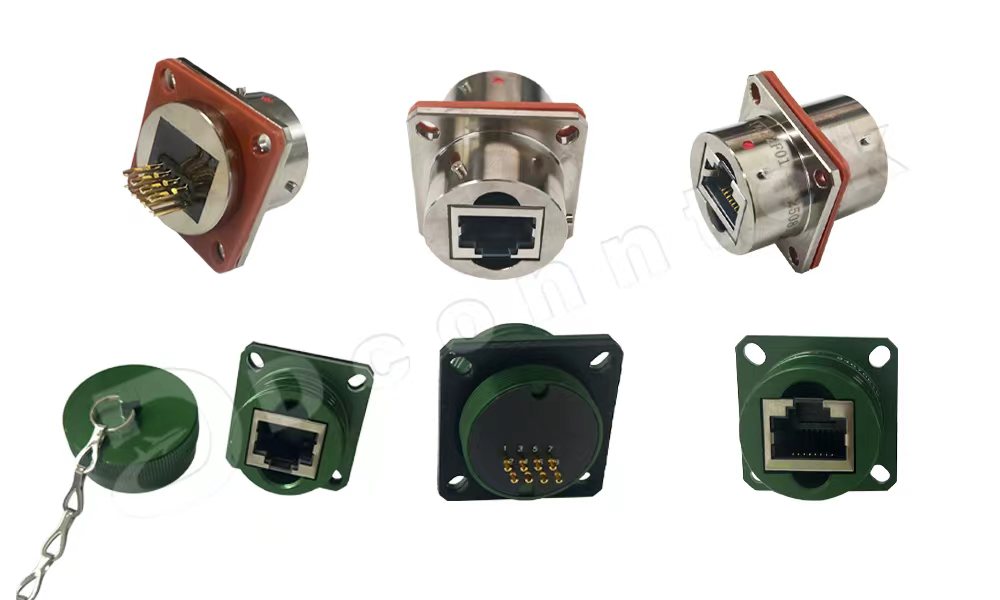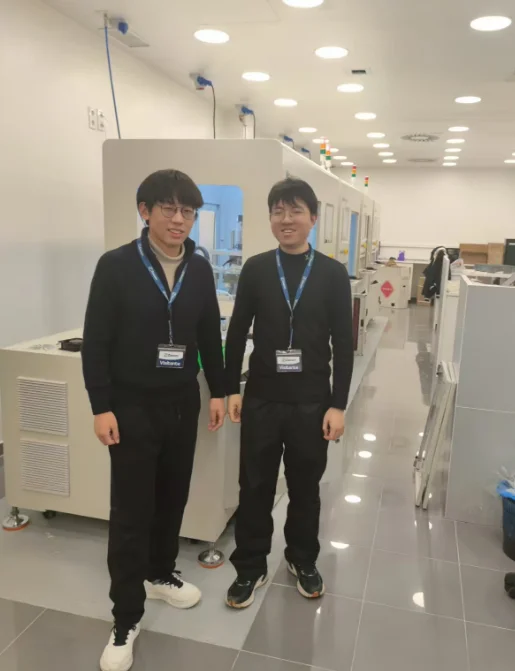Designing high-performance RF circuits and power systems requires careful selection of high-frequency transistors, which play a crucial role in signal amplification, switching, and energy efficiency. JinyiMingsheng Technology, in collaboration with Mengke Electronics, a national high-tech enterprise based in Shenzhen, offers a range of high-frequency semiconductors that meet the demanding requirements of modern RF and power applications. Their portfolio includes MOSFETs, diodes, voltage regulators, thyristors, and silicon-controlled rectifiers, providing engineers with the flexibility to optimize designs for performance, reliability, and manufacturability.
This guide provides a comprehensive overview of high-frequency transistor selection, including key parameters, performance trade-offs, material considerations, packaging options, thermal management strategies, and reliability metrics. Engineers can leverage this information to make informed component choices and enhance system efficiency in both RF and power electronics applications.
Key Parameters for High-Frequency Transistor Selection
Selecting the right transistor begins with understanding the critical electrical and physical parameters that affect high-frequency performance:
-
Cutoff Frequency (fT)
The transition frequency, fT, indicates the frequency at which the transistor current gain drops to unity. For RF circuits, fT should be several times higher than the operating frequency to ensure linearity and minimal signal distortion. -
Maximum Operating Voltage (Vce/Vds)
The transistor must withstand the maximum collector-emitter or drain-source voltage in the circuit. Exceeding this rating can lead to breakdown, leakage, or catastrophic failure. -
Current Handling Capability (Ic/Id)
Peak and continuous current ratings define how much current the transistor can safely conduct without overheating or degrading performance. -
Gain and Linearity
High-frequency amplifiers require transistors with sufficient gain and linearity to maintain signal fidelity, particularly in communication systems or precision power supplies. -
Parasitic Capacitances and Inductances
Input and output capacitances, along with package-induced inductances, influence high-frequency performance. Minimizing parasitics is critical for applications in RF, microwave, and high-speed digital circuits. -
Thermal Resistance (RθJC / RθJA)
Efficient heat dissipation is essential, especially in power systems. Transistor junction-to-case and junction-to-ambient thermal resistances must align with the system’s cooling strategy.
Material and Device Type Considerations
High-frequency performance depends not only on electrical ratings but also on semiconductor material and device type:
-
Silicon (Si)
Widely used in standard MOSFETs, BJTs, and SCRs, offering cost-effective performance for most RF and power applications up to GHz frequencies. -
Silicon Carbide (SiC) and Gallium Nitride (GaN)
These wide-bandgap materials enable higher breakdown voltages, faster switching speeds, and improved thermal performance, making them ideal for power RF amplifiers and high-efficiency converters. -
Device Type Selection
-
Bipolar Junction Transistors (BJT): Offer high gain and linearity but require base current control. Suitable for RF amplifiers where linearity is critical.
-
MOSFETs: Provide voltage-controlled operation with low gate drive, high efficiency, and fast switching for power conversion.
-
JFETs: Useful in low-noise RF applications due to their high input impedance.
-
GaN HEMTs: Exceptional for high-power RF and microwave frequencies due to low parasitics and high fT.
Packaging Options and Parasitic Effects
Transistor package selection can significantly affect high-frequency performance:
-
SOT-23 and SOT-223: Compact packages for low-power RF circuits. Minimal parasitics but limited current handling.
-
TO-220 and TO-247: Larger packages designed for power MOSFETs, providing better heat dissipation.
-
QFN and DFN: Ideal for high-frequency PCB integration with low inductance leads and controlled impedance.
-
Custom OEM Packages: Mengke Electronics offers flexible OEM/ODM packaging for specialized RF or power applications, optimizing parasitic capacitance and inductance.
Proper package selection balances thermal performance, assembly compatibility, and parasitic minimization for high-speed circuits.
Thermal Management and Reliability
Effective thermal management is critical in both RF and power systems to prevent performance degradation or failure:
-
Heat Sinks and PCB Design
Thermal vias, copper planes, and external heat sinks dissipate heat efficiently. High-frequency circuits benefit from low-inductance thermal paths. -
Thermal Interface Materials (TIMs)
TIMs improve heat transfer between transistor cases and heatsinks, reducing junction temperature and extending device life. -
Continuous Monitoring
Engineers must design circuits that prevent exceeding safe junction temperatures, accounting for pulse-width, duty cycles, and ambient conditions. -
Reliability Testing
Transistors should undergo thermal cycling, high-temperature storage, and high-frequency stress testing to ensure consistent performance under operating conditions.
Application-Specific Selection Strategies
High-frequency transistor selection varies depending on RF or power system requirements:
RF Circuits
-
Focus on low noise figure, high fT, and minimal parasitic capacitance.
-
GaN or SiGe transistors are often preferred for microwave power amplifiers.
-
Packaging must minimize lead inductance and maintain impedance matching.
Power Systems
-
Emphasize current handling, voltage rating, and thermal resistance.
-
SiC MOSFETs and IGBTs provide high-voltage and high-efficiency switching.
-
Fast switching devices reduce switching losses and EMI in power converters.
Hybrid Systems
-
Applications such as RF-driven power supplies require transistors balancing RF performance and high-current handling.
-
Engineers often use MOSFET-BJT hybrids or integrate GaN devices with thermal management for optimized performance.
Industry Trends in High-Frequency Semiconductor Devices
Global semiconductor trends influence transistor selection:
-
GaN and SiC Adoption: Accelerating in RF and high-power applications due to superior efficiency and thermal handling.
-
Miniaturization and Integration: Higher frequency circuits demand smaller footprints with multi-functional devices.
-
Energy Efficiency: Regulatory and environmental pressures drive selection of low-loss, high-efficiency transistors.
-
OEM/ODM Customization: Manufacturers like Mengke Electronics provide tailored solutions for specific application requirements.
Selection Checklist for Engineers
To simplify the component selection process, consider the following checklist:
| Parameter / Feature | Key Consideration |
|---|---|
| Frequency Rating | fT should exceed the operating frequency by 3–5x for RF circuits |
| Voltage Rating | Vce/Vds > maximum expected circuit voltage |
| Current Rating | Ic/Id > peak current under normal operating conditions |
| Gain & Linearity | Sufficient for signal fidelity in amplifiers |
| Thermal Resistance | Ensure heat dissipation aligns with system cooling |
| Package Type | Low parasitics for RF, efficient heat for power |
| Semiconductor Material | Si for general, GaN/SiC for high-efficiency or high-power applications |
| Noise Performance | Low noise for sensitive RF receivers |
| OEM/ODM Availability | Customized solutions for specific design requirements |
Frequently Asked Questions (FAQ)
Q1: Can the same transistor type be used for RF and power applications?
A1: Not always. RF circuits prioritize high fT and low noise, while power systems emphasize current handling, voltage rating, and thermal management. Some wide-bandgap devices like GaN can bridge both.
Q2: How important is package selection for high-frequency performance?
A2: Critical. Packaging affects parasitic capacitance and inductance, which can impact signal integrity and switching speed. QFN and DFN packages are often preferred for RF circuits.
Q3: What are the advantages of SiC and GaN transistors?
A3: They provide higher breakdown voltage, faster switching, lower thermal resistance, and improved efficiency compared to silicon transistors, ideal for high-frequency and high-power applications.
Q4: How do I calculate thermal requirements for a high-frequency transistor?
A4: Determine junction temperature rise based on power dissipation and thermal resistance. Ensure cooling (heat sinks, PCB copper, TIM) keeps the junction below the maximum rated temperature.
Q5: Can Mengke Electronics provide customized high-frequency transistors?
A5: Yes, they offer OEM/ODM customization, including packaging, electrical ratings, and thermal performance tailored to client-specific applications.
Conclusion
High-frequency transistor selection is a multidimensional process requiring a thorough understanding of electrical parameters, material properties, packaging, thermal management, and application-specific requirements. Engineers designing RF circuits or power systems must carefully balance gain, linearity, voltage, current, and thermal performance to optimize system efficiency and reliability.
JinyiMingsheng Technology, in partnership with Mengke Electronics, provides engineers with a broad range of high-frequency semiconductors, including MOSFETs, BJTs, and GaN devices, alongside customized OEM/ODM solutions to meet global performance standards. By leveraging advanced material science, precision packaging, and rigorous quality assurance, these components enable engineers to achieve superior RF amplification, efficient power conversion, and robust long-term performance.
www.jymskj.com
Shenzhen Mengke Electronic Technology CO. LTD


More Stories
Choosing the Right Wireless Headphones for Seniors: A Complete ARKON Guide
Why HDMI Extender CAT Solutions Fail in Large-Scale AV Installations—and How SZBITC Fixes It
Authenticity Guide: 6 Key Verification Points for Genuine JK OLED Displays